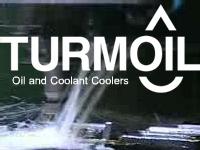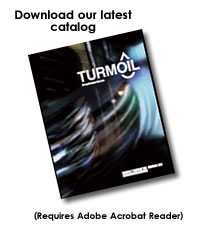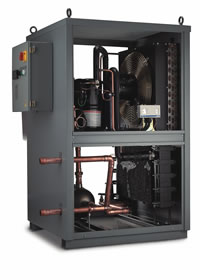It is very important to determine the type of cooler that is required. All applications involve a fluid passing through an evaporator (heat exchanger), but how does the coolant get there?
Closed-Loop coolers recirculate coolant from a tank mounted in the cooler, through the heat load and back to the tank. The tank, pump, and evaporator are all in the cooler.
Open-Loop coolers recirculate coolant from a remote tank, through the cooler and back to the tank. The pump and evaporator are in the cabinet. The tank is remote.
In-Line coolers cool fluid that is passing through the cooler under pressure. Only the evaporator is in the cooler. The pump and tank are remote.
Drop-In coolers are mounted on top of the coolant tank with the stainless steel evaporator coils submerged in the coolant. |
Because water and oil have such different heat transfer characteristics, it is very important that the type of coolant being used is determined. If in doubt, specify an OCO cooler.
Water-Based Coolants are fluids that contain not more than 5% oil. These coolants may contain additives such as rust inhibitors, algaecides, and/or up to 30% glycol.
Oil-Based Coolants are fluids that contain more than 5% oil. Soluble oils, semi-synthetic fluids, hydraulic oils, cutting oils, and spindle oils are typical.
Clean Coolants are fluids that do not contain particles that could clog the pump or evaporator. The coolant is usually sealed from contamination or filtered to remove damaging particles.
Dirty Coolants contain or potentially can contain particles such as fines or chips that could clog the pump or evaporator. An In-Line filter or cleanable evaporator is often required. |


 Engineering the Cooler
Engineering the Cooler